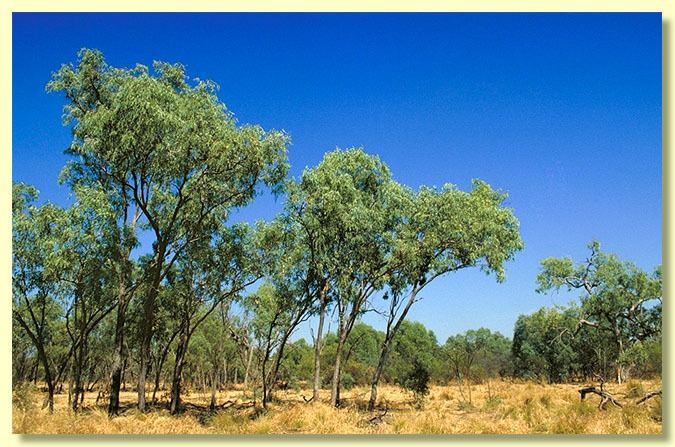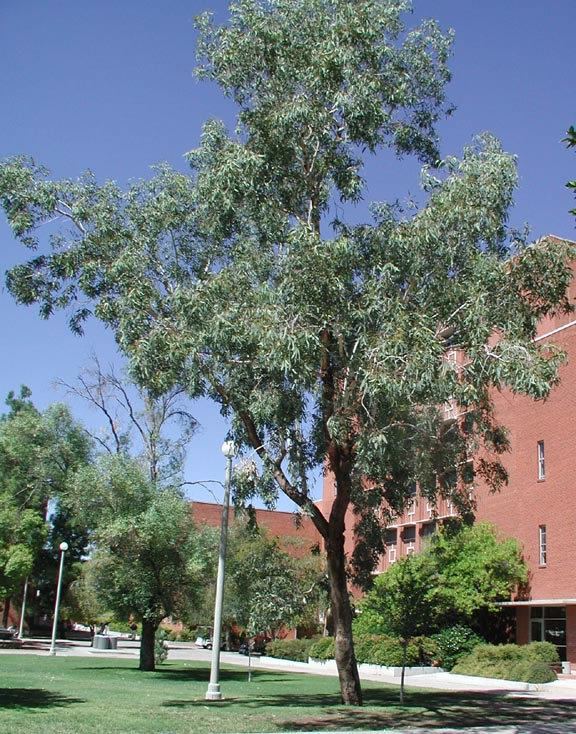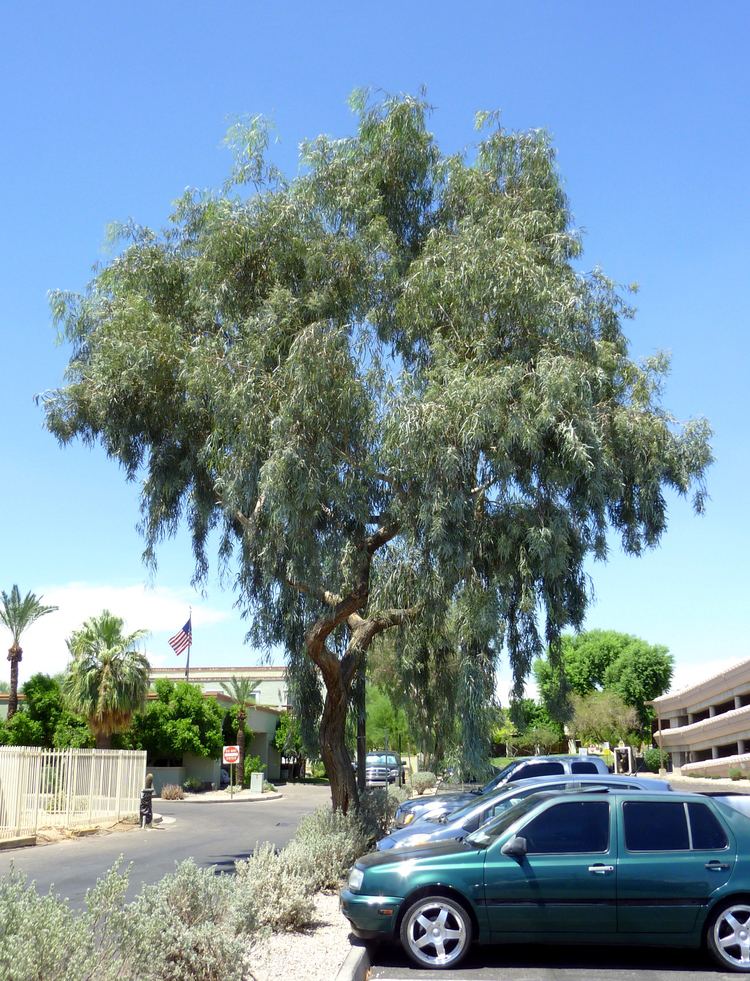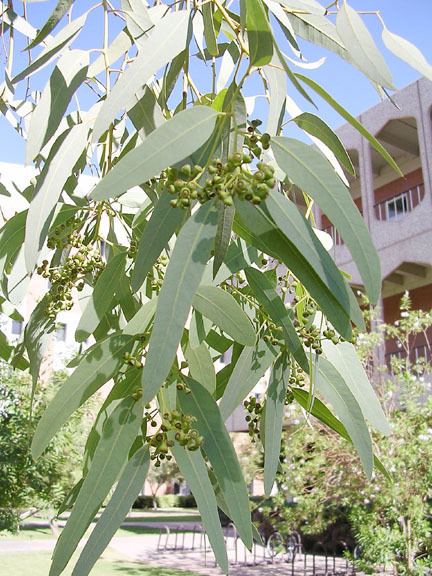Rank Species | ||
 | ||
Similar Eucalyptus coolabah, Eucalyptus melanophloia, Eucalyptus largiflorens, Eucalyptus spathulata, Eucalyptus erythrocorys | ||
Eucalyptus microtheca, commonly known as the coolibah, is a species of eucalypt native to Australia.
Contents
Description

The tree typically grows to a height of 10 metres (33 ft), forms a lignotuber and sometimes has a mallee habit. It has a whitish grey to dark grey, box-type bark that is often deeply fissured, coarsely flaky or becoming tessellated.

The adult leaves alternate, concolorous, dull, green to blue-green in appearance with petioles that are 0.6 to 2 centimetres (0.24 to 0.79 in) long. The blade is lanceolate to falcate in shape and 5 to 19.5 cm (2.0 to 7.7 in) in length and 0.6 to 4.5 centimetres (0.24 to 1.77 in) wide with a base tapering to petiole with a pointed apex.

The tree blooms between September and January producing terminal inflorescences with slender peduncles that are 0.2 to 1.2 cm (0.08 to 0.47 in) long on a seven flowered umbellasters. Flowers are white in colour and later form fruit that are truncate-globose to obconical in shape on pedicels 0.1 to 0.3 cm (0.04 to 0.12 in) long containing dark brown seeds. The tree fruits year round.

E. microtheca is most closely related to the widespread Eucalyptus coolabah which is found in similar but drier habitats to the south and south-east It is also closely related to Eucalyptus victrix which is found in even drier habitats from central Australia west to the Pilbara region of Western Australia.
Distribution

The tree is distributed widely across northern Australia and mostly found along river banks and in the heavy soils of flood plains. It is the second most widely distributed species in Australia after Eucalyptus camaldulensis.

The species is found waterlogged flats, along the margins of swamps in the Kimberley region of Western Australia. Populations of the tree are scattered through several IBRA regions including Dampierland, Northern Kimberley, Central Kimberley, Ord Victoria plain and Victoria Bonaparte. It is also distributed throughout the top end of the Northern Territory east from the Western Australian border as far north as about Newcastle Waters and through the Barkly Tableland east through the catchment ares of the Roper and McArthur Rivers and into the Gulf Country of Queensland. In Queensland the range of the plant extends from the Gulf Country to western Cape York and south to about Mount Isa.
Uses
Indigenous Australians harvested seeds from E. microtheca as a source of food.
The wood produced by the tree is extremely hard and difficult to work with but is excellent for firewood and makes long-lasting fence posts that resist weathering and insects. The trees have a dense, rounded shape making then wind resistant and useful as windbreaks and to control erosion. They are one of the more commonly planted eucalyptus species in the southwestern United States since they are fast and easy to grow. Able to tolerate full sun, withstand temperatures below freezing and grow in soils with poor fertility makes them easy to grow.
Oils extracted from the leaves and blossom of the plant contain 101 compounds including α-pinene, O-cymen, β-pinene, aromadendrene, α-phellandrene and globulol. Some of the chemicals isolated are utilised in medicinal and food products and others are alternatives to insecticide agents.
Classification
The species was first described by the botanist Ferdinand von Mueller in 1859 in the Journal of the Linnean Society from samples he had collected in 1855 along the Victoria River in the Northern Territory.
